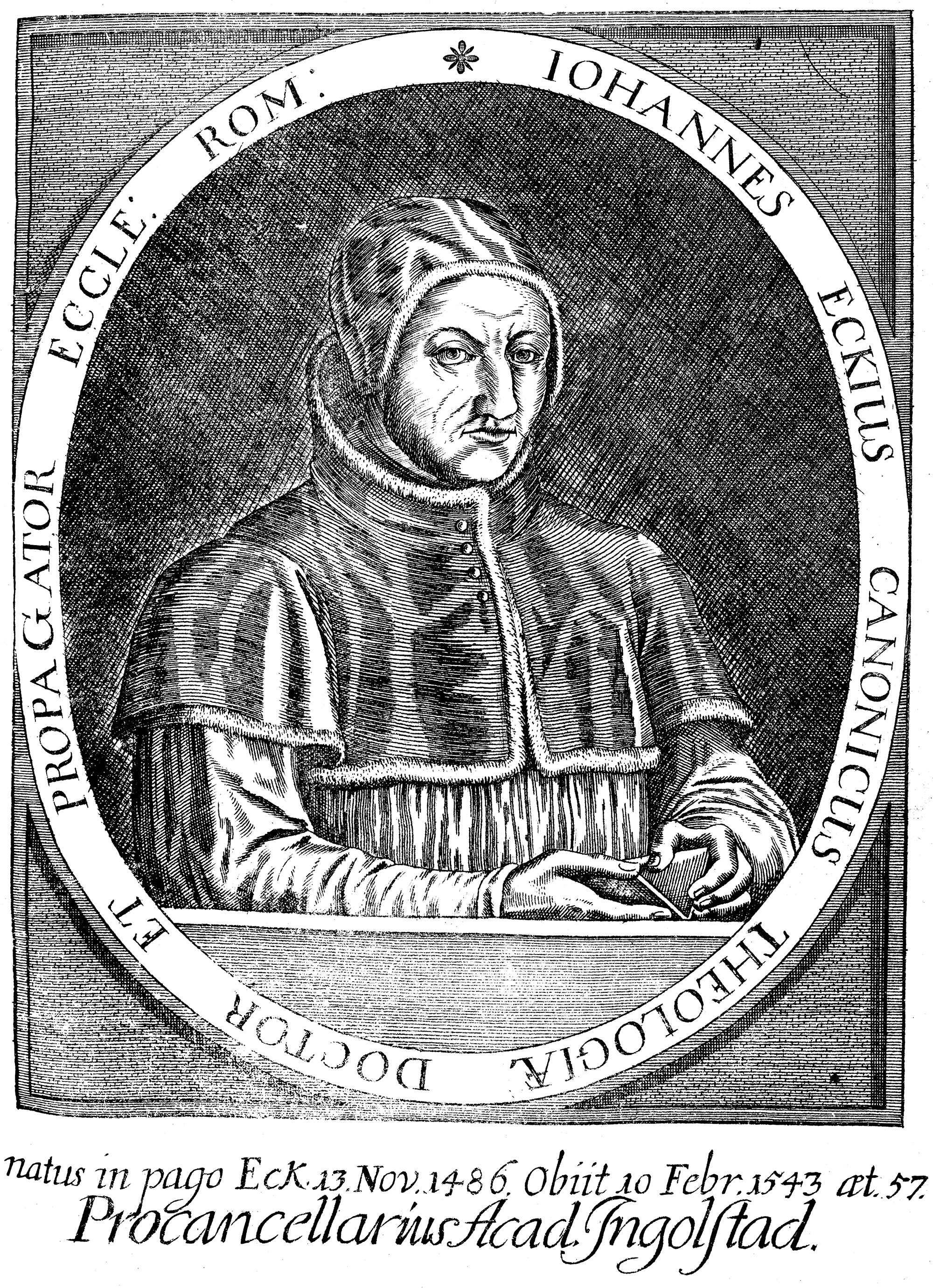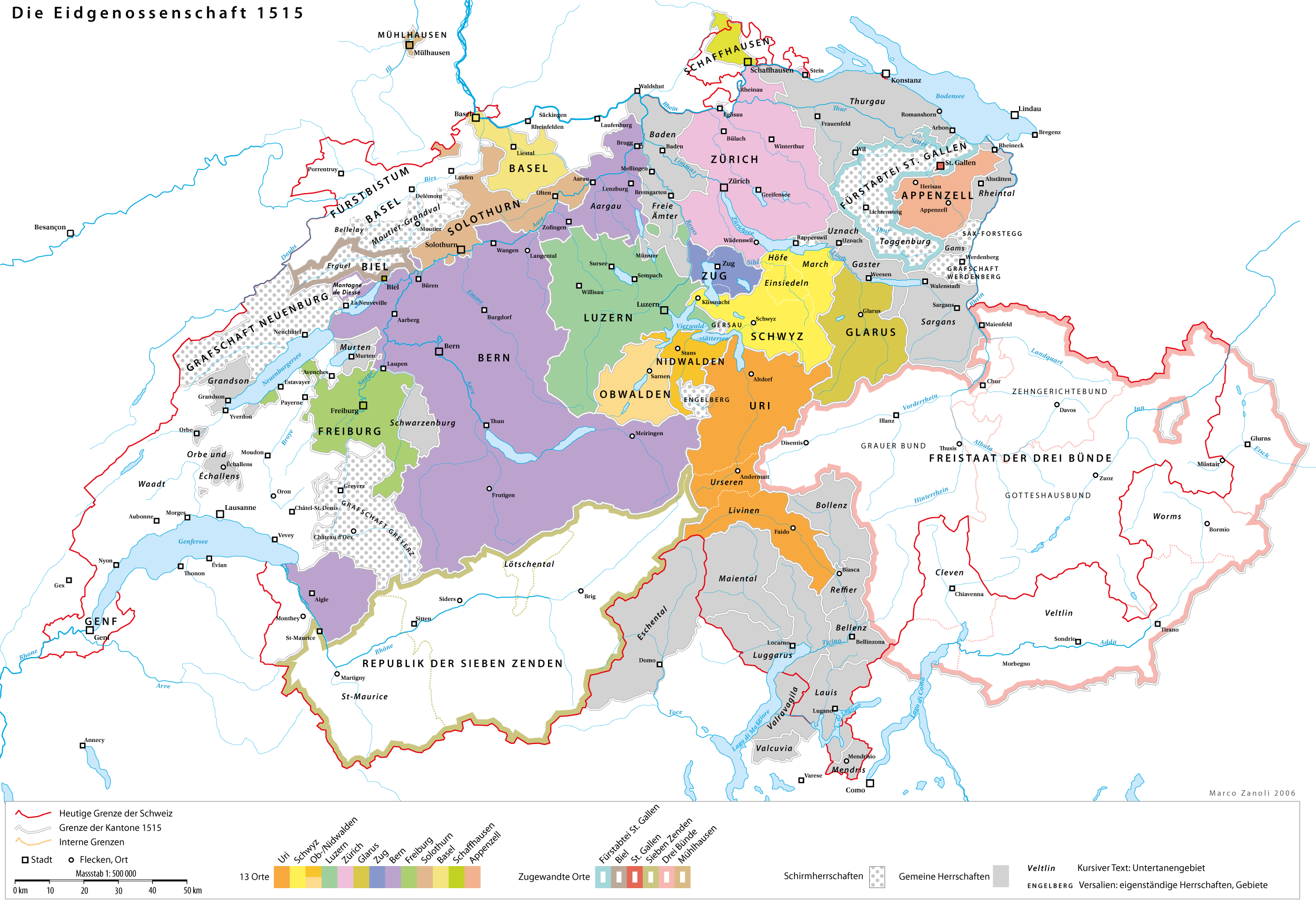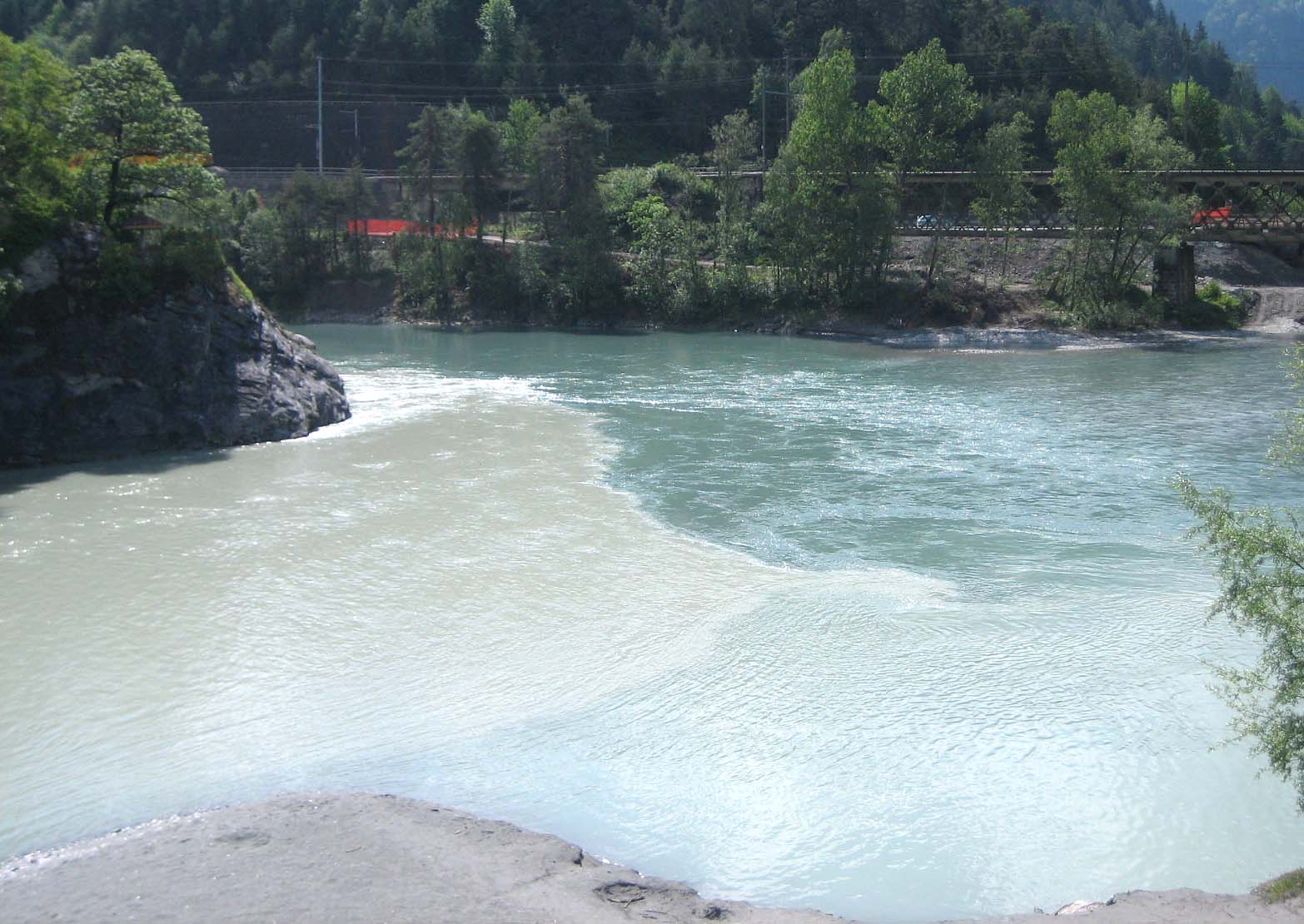|
Swiss Brethren
The Swiss Brethren are a branch of Anabaptism that started in Zürich, spread to nearby cities and towns, and then was exported to neighboring countries. Today's Swiss Mennonite Conference can be traced to the Swiss Brethren. In 1525, Felix Manz, Conrad Grebel, George Blaurock and other radical evangelical reformers broke from Ulrich Zwingli and formed a new group because they felt reforms were not moving fast enough. Rejection of infant baptism was a distinguishing belief of the Swiss Brethren. On the basis of Sola scriptura doctrine, the Swiss Brethren declared that since the Bible does not explicitly mention infant baptism, it should not be practiced by the church. This belief was subsequently rejected by Ulrich Zwingli. Consequently, there was a public dispute, in which the council affirmed Zwingli's position. This solidified the Swiss Brethren and resulted in their persecution by all other reformers as well as the Catholic Church. Because of persecution by the authorities, ... [...More Info...] [...Related Items...] OR: [Wikipedia] [Google] [Baidu] |
Anabaptism
Anabaptism (from Neo-Latin , from the Greek : 're-' and 'baptism', german: Täufer, earlier also )Since the middle of the 20th century, the German-speaking world no longer uses the term (translation: "Re-baptizers"), considering it biased. The term (translation: "Baptizers") is now used, which is considered more impartial. From the perspective of their persecutors, the "Baptizers" baptized for the second time those "who as infants had already been baptized". The denigrative term Anabaptist, given to them by others, signifies rebaptizing and is considered a polemical term, so it has been dropped from use in modern German. However, in the English-speaking world, it is still used to distinguish the Baptizers more clearly from the Baptists, a Protestant sect that developed later in England. Compare their self-designation as "Brethren in Christ" or "Church of God": . is a Protestant Christian movement which traces its origins to the Radical Reformation. The early Anabaptists ... [...More Info...] [...Related Items...] OR: [Wikipedia] [Google] [Baidu] |
Confession Of Faith
A creed, also known as a confession of faith, a symbol, or a statement of faith, is a statement of the shared beliefs of a community (often a religious community) in a form which is structured by subjects which summarize its core tenets. The earliest known creed in Christianity, "Jesus is Lord", originated in the writings of Paul the Apostle. One of the most widely used Christian creeds is the Nicene Creed, first formulated in AD 325 at the First Council of Nicaea. It was based on Christian understanding of the canonical gospels, the letters of the New Testament and, to a lesser extent, the Old Testament. Affirmation of this creed, which describes the Trinity, is generally taken as a fundamental test of orthodoxy for most Christian denominations, and was historically purposed against Arianism. A shorter version of the creed, called the Apostles' Creed, is nowadays the most used version in Christian services. Some Christian denominations do not use any of those creeds. A ... [...More Info...] [...Related Items...] OR: [Wikipedia] [Google] [Baidu] |
Johann Eck
Johann Maier von Eck (13 November 1486 – 13 February 1543), often anglicized as John Eck, was a German Catholic theologian, scholastic, prelate, and a pioneer of the counter-reformation who was among Martin Luther's most important interlocutors and theological opponents. Life Johann Eck was born Johann Maier at Eck (later Egg, near Memmingen, Swabia) and derived his additional surname from his birthplace, which he himself, after 1523, always modified into Eckius or Eccius, i.e. "of Eck". His father, Michael Maier, was a peasant and bailiff, or ''Amtmann'', of the village. The boy's education was undertaken by his uncle, Martin Maier, parish priest at Rottenburg on the river Neckar. At the age of 12 he entered the University of Heidelberg, which he left in the following year for Tübingen. After taking his master's degree in 1501, he began the study of theology under Johann Jakob Lempp, and studied the elements of Hebrew and political economy with Konrad Summenhart. H ... [...More Info...] [...Related Items...] OR: [Wikipedia] [Google] [Baidu] |
Balthasar Hubmaier
Balthasar Hubmaier (1480 – 10 March 1528; la , Pacimontanus) was an influential German Anabaptist leader. He was one of the most well-known and respected Anabaptist theologians of the Reformation. Early life and education He was born in Friedberg, Bavaria in 1480. Information on his parentage is lacking. He attended Latin School at Augsburg, and entered the University of Freiburg on 1 May 1503. Insufficient funds caused him to leave the university and teach for a time at Schaffhausen, Switzerland. He returned to Freiburg in 1507 and received both a bachelor's and a master's degree in 1511. In 1512, he received a doctor's degree from the University of Ingolstadt under John Eck, and became the university's vice-rector by 1515. Hubmaier's fame as a pulpiteer was widespread. He left the University of Ingolstadt for a pastorate of the Roman Catholic church at Regensburg in 1516. After Maximilian I's death in 1519, Hubmaier helped orchestrate a violent pogrom against Regensburg' ... [...More Info...] [...Related Items...] OR: [Wikipedia] [Google] [Baidu] |
Grüningen
Grüningen is a town and municipality in the district of Hinwil in the canton of Zürich in Switzerland, notable for its well-preserved historic nucleus. History Grüningen is first mentioned in 1243 as ''apud Gruningin''. The village of Itzikon was first mentioned in 837 as ''in Izinheimo'' and Binzikon was mentioned in 854 as ''in willa Pinuzzinhovun''. In the Strangenholz area of the municipality, burial mounds from a Hallstatt era population have been found. The Alamannic settlement dates to c. the 8th century, based on 9th-century records of Itzikon and Binzikon. Grüningen castle was built from the early 13th century, most likely by the counts of Rapperswil, who acted as reeves for Einsiedeln Abbey. Grüningen is recorded as a possession of Einsiedeln during 1217–1222. Around 1230, Grüningen passed from Einsiedeln to the Abbey of Saint Gall and was at first given as a fief to the counts of Kyburg, and in 1253 to Lütold VI, head of the baronial Regensberg fam ... [...More Info...] [...Related Items...] OR: [Wikipedia] [Google] [Baidu] |
Global Anabaptist Mennonite Encyclopedia Online
The Global Anabaptist Mennonite Encyclopedia Online (GAMEO) is an online encyclopedia of topics relating to Mennonites and Anabaptism. The mission of the project is to provide free, reliable, English-language information on Anabaptist-related topics. GAMEO was started in 1996 as the Canadian Mennonite Encyclopedia Online by the Mennonite Historical Society of Canada. In 2005 the project was renamed to its current title and the scope expanded with the additional partnership of the Mennonite Brethren Historical Commission and the Mennonite Church USA Archives. The collaboration has since further expanded, with the addition of the Mennonite Central Committee in 2006, the Mennonite World Conference in January 2007, and the Institute for the Study of Global Anabaptism in 2011. Starting as a database of Anabaptist groups in Canada, GAMEO secured rights to copy and update the Mennonite Encyclopedia published by Herald Press in the 1950s and 1990. A project goal was to have the ent ... [...More Info...] [...Related Items...] OR: [Wikipedia] [Google] [Baidu] |
Klausen, South Tyrol
Klausen (; it, Chiusa ; Ladin: ''Tluses'' or ''Tlüses'') is a ''comune'' (municipality) in South Tyrol in northern Italy, located about northeast of the city of Bolzano. Geography As of 30 November 2010, it had a population of 5,144 and an area of .All demographics and other statistics: Italian statistical institute Istat. Klausen borders the following municipalities: Feldthurns, Lajen, Sarntal, Vahrn, Villanders and Villnöß. Frazioni The municipality of Klausen contains the ''frazioni'' (subdivisions, mainly villages and hamlets) Gufidaun (Gudon), Latzfons (Lazfons), and Verdings (Verdignes). History Klausen is first mentioned in 1027, in a document issued by emperor Conrad II, as ''Clausa sub Sabiona sita'', meaning chasm below the Säben Abbey. Coat-of-arms The emblem represents an argent dexter key on gules. The emblem was used as a seal from 1448, known from 1397 and granted in 1540 by Cardinal ''Bernhard von Cles'', Bishop of Brixen. Society Linguistic ... [...More Info...] [...Related Items...] OR: [Wikipedia] [Google] [Baidu] |
Tyrol (state)
Tyrol (; german: Tirol ; it, Tirolo) is a States of Austria, state (''Land'') in western Austria. It comprises the Austrian part of the historical County of Tyrol, Princely County of Tyrol. It is a constituent part of the present-day Euroregion Tyrol–South Tyrol–Trentino (together with South Tyrol and Trentino in Italy). The capital of Tyrol is Innsbruck. Geography The state of Tyrol is separated into two parts, divided by a strip. The larger territory is called North Tyrol (''Nordtirol'') and the smaller area is called East Tyrol (''Osttirol''). The neighbouring Austrian state of Salzburg (state), Salzburg stands to the east, while on the south Tyrol has a border with the Italy, Italian province of South Tyrol (Trentino-Alto Adige/Südtirol) which was part of the Austro-Hungarian Empire before the First World War. With a land area of , Tyrol is the third-largest state in Austria. Tyrol shares its borders with the federal state of Salzburg in the east and Vorarlberg in th ... [...More Info...] [...Related Items...] OR: [Wikipedia] [Google] [Baidu] |
Huldrych Zwingli
Huldrych or Ulrich Zwingli (1 January 1484 – 11 October 1531) was a leader of the Reformation in Switzerland, born during a time of emerging Swiss patriotism and increasing criticism of the Swiss mercenary system. He attended the University of Vienna and the University of Basel, a scholarly center of Renaissance humanism. He continued his studies while he served as a pastor in Glarus and later in Einsiedeln, where he was influenced by the writings of Erasmus. In 1519, Zwingli became the Leutpriester (people's priest) of the Grossmünster in Zürich where he began to preach ideas on reform of the Catholic Church. In his first public controversy in 1522, he attacked the custom of fasting during Lent. In his publications, he noted corruption in the ecclesiastical hierarchy, promoted clerical marriage, and attacked the use of images in places of worship. Among his most notable contributions to the Reformation was his expository preaching, starting in 1519, through the Gosp ... [...More Info...] [...Related Items...] OR: [Wikipedia] [Google] [Baidu] |
Bonaduz
Bonaduz ( rm, Panaduz) is a municipality in the Imboden Region in the Swiss canton of Graubünden. History Bonaduz is first mentioned in 960 as ''Beneduces''. Until 1854, the German-speaking hamlet of Sculms belonged to Bonaduz. Following a vote in that year, Sculms joined Versam. Geography Bonaduz has an area, , of . Of this area, 25.2% is used for agricultural purposes, while 61.3% is forested. Of the rest of the land, 7.3% is settled (buildings or roads) and the remainder (6.2%) is non-productive (rivers, glaciers or mountains). Until 2017 the municipality was located in the Rhäzüns sub-district, of the Imboden district, after 2017 it became part of the Imboden Region. [...More Info...] [...Related Items...] OR: [Wikipedia] [Google] [Baidu] |
Nonresistance
Nonresistance (or non-resistance) is "the practice or principle of not resisting authority, even when it is unjustly exercised". At its core is discouragement of, even opposition to, physical resistance to an enemy. It is considered as a form of principled nonviolence or pacifism which rejects all physical violence, whether exercised on individual, group, state or international levels. Practitioners of nonresistance may refuse to retaliate against an opponent or offer any form of self-defense. Nonresistance is often associated with particular religious groups, such as Anabaptist Christianity. Sometimes non-resistance has been seen as compatible with, even part of, movements advocating social change. An often-cited example is the movement led by Mohandas Gandhi in the struggle for Indian Independence. While it is true that in particular instances (e.g., when threatened with arrest) practitioners in such movements might follow the line of non-resistance, such movements are more accur ... [...More Info...] [...Related Items...] OR: [Wikipedia] [Google] [Baidu] |






